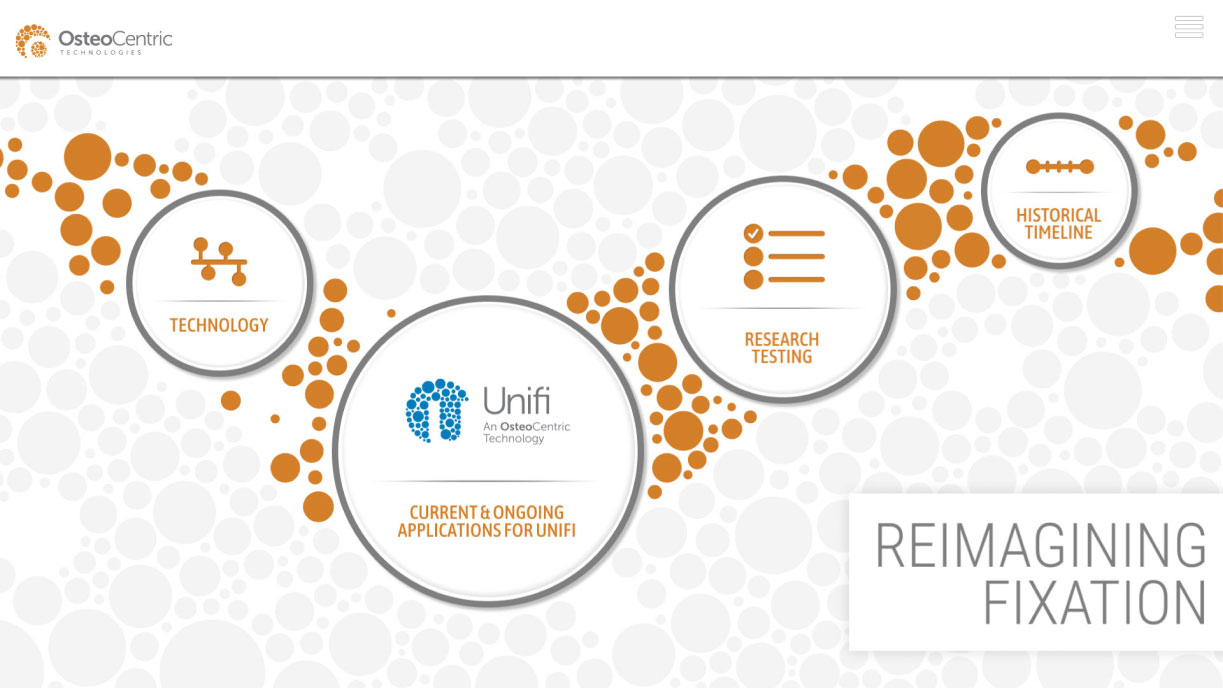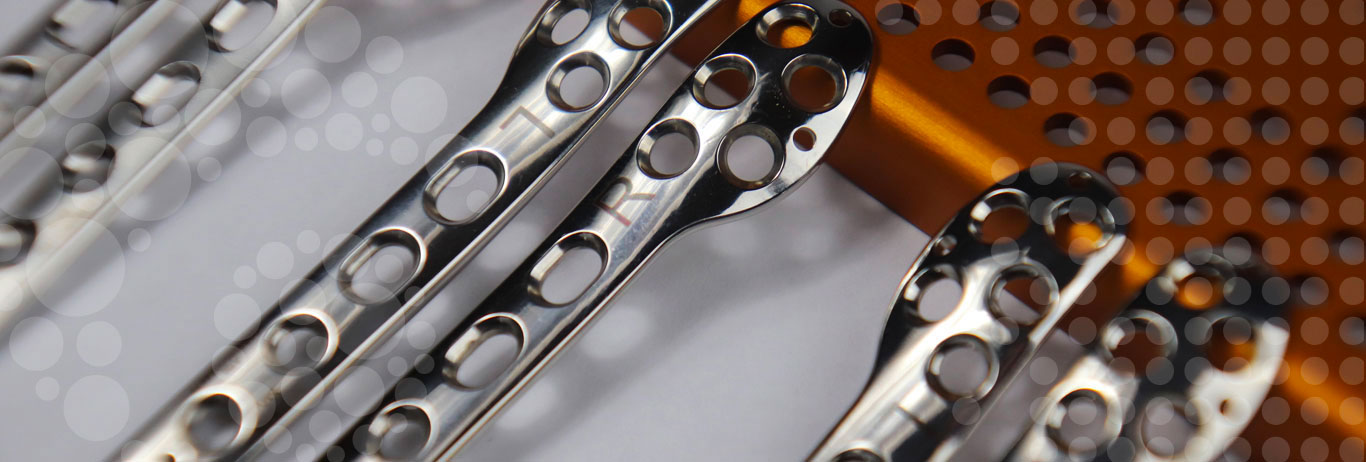OsteoCentric is Revolutionizing Technology for Orthopedic Implants

"We turned to ViewPoint for powerful tools that our leadership and sales teams could use for showcasing our products at industry events and with potential customers."


Empowering Users to Engage with OsteoCentric
The OsteoCentric Technologies project encompassed three elements: a large-format digital experience, a responsive website, and a progressive web app to track surgical cases. "We created an interactive digital kiosk experience that OsteoCentric Technologies could use at medtech trade shows to spotlight their company and their technology," explained ViewPoint’s director Philip Chila. "Using the touchscreen kiosk, potential customers could take a self-guided journey through OsteoCentric’s history, learn about the company’s proprietary technology, explore compelling use cases, and virtually examine products."
ViewPoint also revamped OsteoCentric Technologies’ corporate website so it was more informative, intuitive and easy to update. "The new website is responsive and easily accessible on all devices," said ViewPoint’s web developer Dan Costa. "We completely overhauled the barebones website OsteoCentric originally created at launch, expanding content and reimagining the information architecture and navigation to deliver a better user experience. And because the new site is built in Drupal, which provides a back-end framework for more than 12% of the top 10,000 websites worldwide, it’s easy for OsteoCentric Technologies' admin staff to manage content updates themselves without need for external assistance."

Helping Clinicians Track Patient Cases
A third aspect of the OsteoCentric Technologies project involved creating a case application — a progressive web app that orthopedic surgeons can use via iPad or through a web browser to catalogue each implant and record data on its use. Fields include case type (e.g. trauma or headless compression), dates of initial injury and surgical procedure, age and gender of the patient, the mechanism of the injury (e.g. vehicular accident), and the extremity and location of the implant within the patient’s body.
There are also fields for uploading pre- and post-op images, including X-rays and MRIs. The available fields change based on the case type, only showing relevant fields, as a way to simplify the user interface. To ensure the case information is accurate and comprehensive, clinician-users receive an auto-generated email at both six and 12-weeks post-op intervals to remind them to provide the latest patient updates.
It is important to note that the case app ViewPoint developed for OsteoCentric Technologies does not include patient names or any personally identifiable information (PII), and strictly adheres to HIPAA rules.
The purpose of the case app is twofold: provide clinicians with a convenient way to keep track of their patient cases that incorporate use of OsteoCentric Technologies’ implants; and to help the company’s scientists and engineers understand how surgeons are using the product — insight that helps OsteoCentric Technologies evolve the technology.
"The app makes it much easier for clinicians to add important details about use of our products, either at the time of the procedure or shortly thereafter," Sontag said. "This helps both our clinician-users and our own R&D team as we continually strive to innovate and provide valuable solutions for our customers."
Learn more about OsteoCentric’s revolutionary orthopedic implant technology at www.osteocentric.com.
"We've found ViewPoint to be a pleasure to work with. They are responsive and technically knowledgeable, and they truly understand and appreciate our strategic vision."

